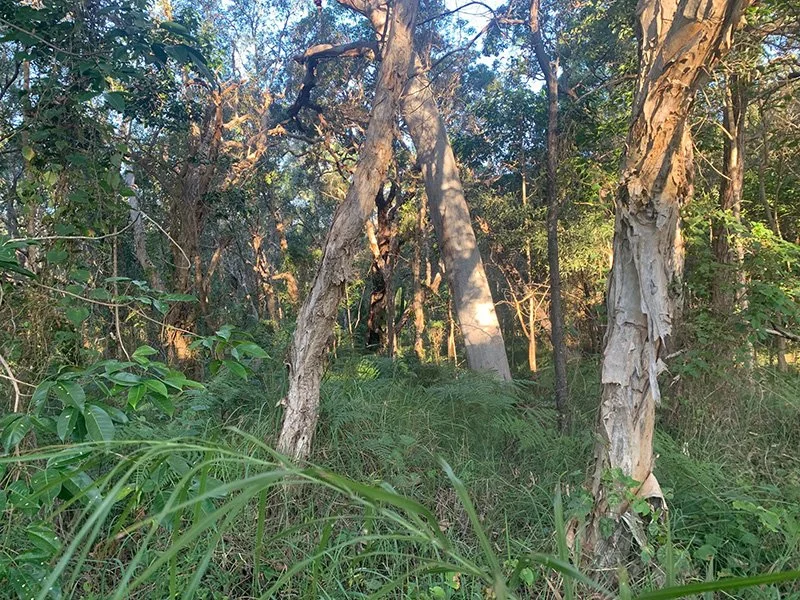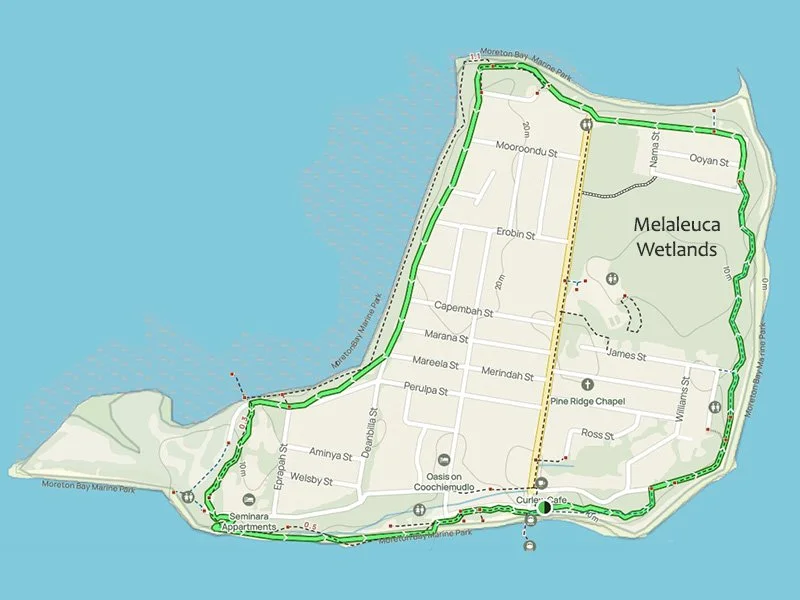Coastal erosion and a defining moment for Coochiemudlo Island Coastcare
By Angela Hoskins
The Royal Geographical Society of Queensland hold well-attended monthly events in Brisbane called ‘Geography in Conversation’. At the November 2023 session, the theme was ‘The impact of coastal erosion on Moreton Bay ecosystems’. One of the featured stories was the effects from ex-tropical cyclone Oswald on Coochiemudlo Island back in 2013 — a defining moment for Coochiemudlo Island Coastcare Inc that had been formed only days before Oswald’s arrival.
Norfolk Beach, Coochiemudlo Island. Note the sand bags added for erosion protection where the Melaleuca Wetlands meets the beach. [Photo taken January 2024.]
Impact of Coastal Erosion on Moreton Bay Ecosystems
Event: Geography in Conversation: The Impact of Coastal Erosion on Moreton Bay Ecosystems
When/Where: 28 November 2023, Brisbane
Organisers: Royal Geographical Society of Queensland
Guest speakers: Professor Peter Nielsen, School of Civil Engineering, University of Queensland; Ms Dianne Aylward, Principal, Moreton Bay Environmental Education Centre; Ms Vivienne Roberts-Thomson, President of the Coochiemudlo Island Coastcare.
Professor Peter Nielsen spoke about flow slides (often mis-named in the media as ‘sink holes’) that have occurred on North Stradbroke Island. Professor Nielsen’s research is also feeding into the Redlands City Council Shoreline Erosion Management Plan for erosion mitigation at Amity Point on North Stradbroke Island.
Dianne Aylward spoke about the valuable education programs that school children of all ages are participating in to learn about marine ecosystems on Moreton Bay. The Moreton Bay Environmental Education Centre (MBEEC) has a vision to establish ‘a deep connection to Moreton Bay and care for its future’. The Centre is achieving this through education, and fostering the understanding of the science behind caring for marine ecosystems and biodiversity. This includes the importance of promoting sea grass growth, managing and eliminating microplastics in the Bay, maintaining habitat on shorelines. The Centre will have a presence on Coochiemudlo Island at the Queensland Department Education facility, Coochiemudlo Island Lodge, scheduled for completion in 2024.
Vivienne Roberts-Thomson spoke about the impact of ex-tropical Oswald and the erosion of the eastern shoreline of Coochiemudlo Island.
Back in 2013, the effects of ex-tropical cyclone Oswald eroded tonnes of sand along Norfolk Beach on the east of Coochiemudlo Island. Trees were uprooted, walkways along the shoreline were eroded away. The island’s economy was also at risk. The storm surge exposed Coochiemudlo’s fragile ecosystems, particularly the Melaleuca Wetlands.
Oswald arrived only days after Coochiemudlo Island Coastcare Inc. had been formed. Vivienne described the cyclone as ‘a baptism of fire’ for the fledgling organisation.
SEQ Catchments decided after an assessment of affected areas in south-east Queensland to invest in recovery with federal funds and a collaborative course of action was set with Redland City Council and Coastcare. A team of contractors worked with heavy machinery for six weeks restoring beaches, pushing sand, standing trees upright and re-opening access paths. The community rallied with mass plantings, restoring new dunes to create a more resilient shoreline. Ten years after the event, that work continues today.
Road on the eastern side of Coochiemudlo Island giving way to erosion after the storm surge in 2013. [Photo courtesty of Coochiemudlo Island Coastcare]
Worth protecting: the fragile ecosystem of the Melaleuca Wetlands situated behind the shoreline on Norfolk Beach.
The Melaleuca Wetlands located in the north-east of the island where the bush meets the sea.
See the 2013 Storm Surge photo gallery (Coochiemudlo Coastcare website).
Storm surges and the natural process of beach recovery
A storm surge is a temporary increase in sea level caused by a heavy storm or cyclonic conditions when high winds and low atmospheric pressure push large amounts of water toward the shore. Elevated water levels and powerful waves can lead to significant erosion along coastal areas, with the force of the waves eroding and displacing sand away from the beach, potentially causing a loss of shoreline.
When the storm surge subsides and weather conditions improve, the natural processes of sand redistribution should come into play: Waves and currents along the shoreline help to bring sand back to the eroded areas. The beach profile can begin recover over time as the waves deposit sand back onto the beach, a process of natural replenishment.
Read more about improving Australia’s resilience to storm cluster disaster events and coastal erosion on the Geoscience Australia website.
When is human intervention necessary?
Human intervention may be required to speed up the recovery process from beach erosion, especially in highly developed coastal areas where the community and property are at risk from shoreline erosion.
The eastern shoreline of Coochiemudlo Island is not a developed area, yet it required human intervention. The erosion had uprooted trees that had been growing on the shoreline. where the bush meets the sea during high tide. The Ramsar-listed Melaleuca Wetlands were at risk of salt-water inundation.
Why didn’t Norfolk Beach recovering through sand replenishment? One reason could be the historical dredging of coral and shellfish reefs in Moreton Bay which significantly altered the topography of the seafloor in the bay.
The destruction of shellfish reefs, and coral dredging
Historically, Moreton Bay was rich in oyster reefs and coral reefs.
Coral reefs were mined between 1931–1997 by the Queensland Cement and Lime Company (QCL). Nearly all the reefs around Mud Island, plus reefs along the eastern side of St Helena Island, and much of the reef at Empire Point, were mined.
After nearly two hundred years of dredging the seafloor, there are no coral structures for shellfish to grow on and the populations are too low to allow successful spawning.
The change of seabed terrain from dredging, and the resulting disturbance to the bay’s ecosystem, has potentially resulted in conditions that negatively impact the natural recovery of erosion through sand replenishment to shorelines after severe storm surges.
Restoring shellfish reefs
A restoration project is underway, with the Central Moreton Bay OzFish working to restore 100 hectares of shellfish reef in Moreton Bay. The restoration will improve water quality in the bay, improve aquatic life and seagrass habitat. (Refer to the Moreton Bay Shellfish Reef Restoration Project)
Further reading:
The coral dredgers (Moreton Bay Foundation website)
‘Coastcare volunteers undertake revegetation works along our Ramsar-listed Melaleuca Wetlands beach’ (Coochiemudlo Coastcare website)




